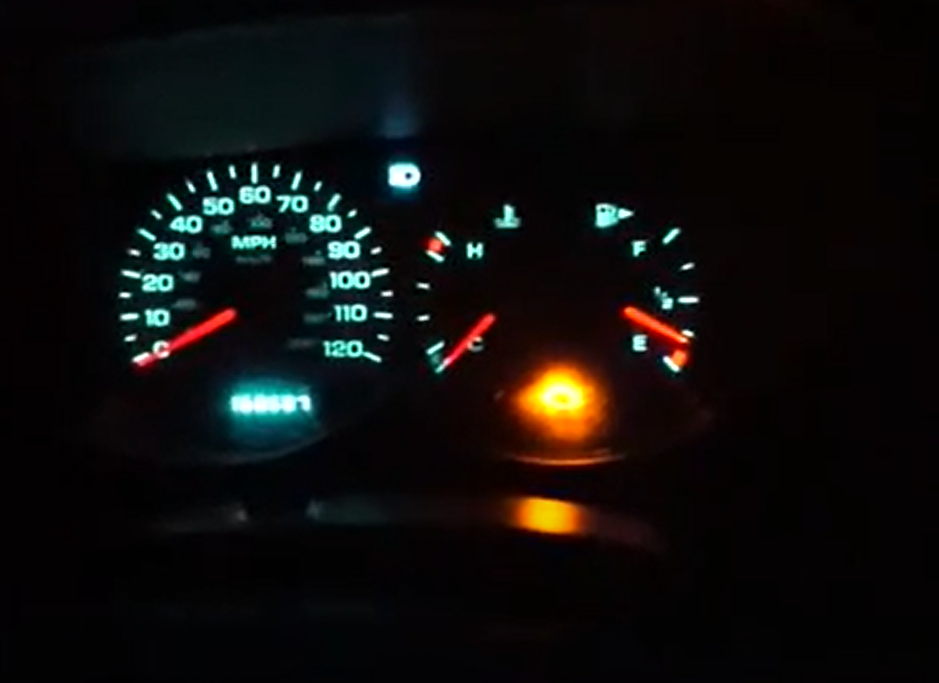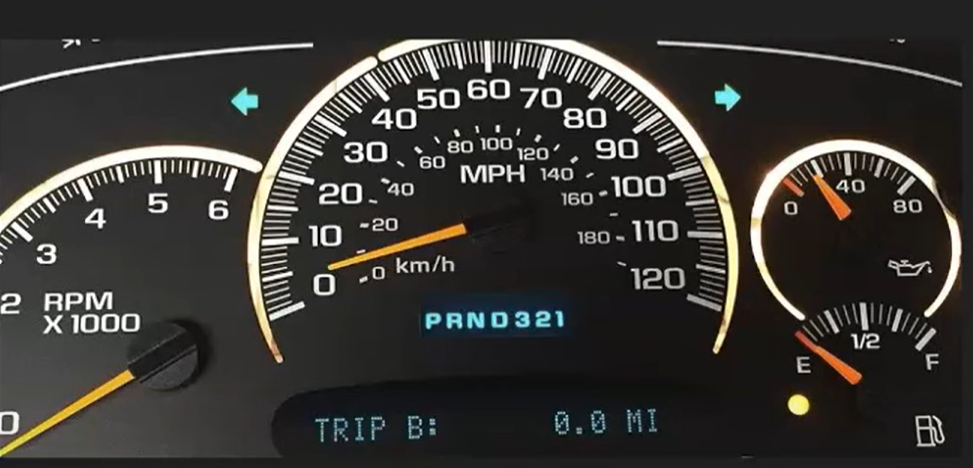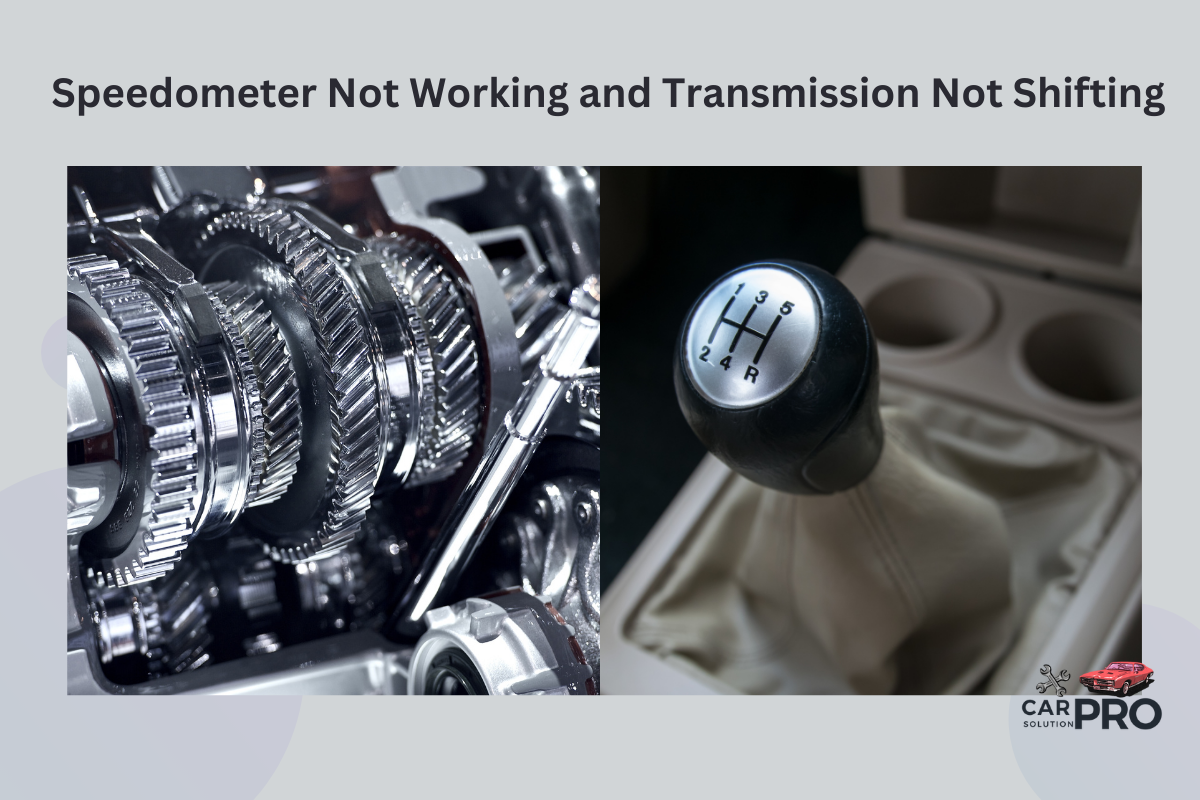Is your car’s speedometer stuck at zero while your transmission refuses to shift gears? This problem can be scary and dangerous. You might feel lost without knowing how fast you’re going or being able to change gears properly.
The main causes of a non-working speedometer and transmission not shifting are often linked to the speed sensor, low transmission fluid, or electrical issues. These problems can affect both the speedometer and the transmission’s ability to shift gears correctly.
Fixing this issue is important for safe driving. Without a working speedometer, it’s hard to follow speed limits. A transmission that won’t shift can leave you stuck in one gear, making driving difficult or impossible. It’s best to address these problems quickly to avoid accidents or further damage to your car.
Key Takeaways
- Speed sensor issues can cause both speedometer and transmission problems
- Low transmission fluid may lead to shifting difficulties and speedometer malfunction
- Electrical problems like blown fuses or bad wiring can affect both systems
Understanding Vehicle Speedometers
Speedometers are essential instruments in vehicles that display the current speed. They rely on various components and mechanisms to accurately measure and show how fast a car is moving.
Components of a Speedometer
A typical speedometer consists of several key parts:
- Speed sensor
- Cable or electronic signal
- Magnet
- Speed cup
- Pointer
- Dial face
The speed sensor attaches to the transmission or wheel hub. It sends signals to the speedometer through a cable or electronic connection.
Inside the speedometer, a magnet spins based on these signals. The magnet’s rotation causes the speed cup to move. This movement controls the pointer on the dial face.
Modern cars often use electronic speedometers. These rely on sensors and the car’s computer to calculate and display speed digitally.
How Speedometers Function

Speedometers work by measuring wheel rotations and converting them to speed. In older cars, a flexible cable connects the transmission to the speedometer. As the wheels turn, they spin the cable.
The spinning cable rotates the magnet inside the speedometer. This creates a magnetic field that interacts with the speed cup. The cup’s movement controls the pointer’s position on the dial.
Electronic speedometers use speed sensors on the transmission or wheels. These sensors send electrical pulses to the car’s computer. The computer then calculates the speed and displays it on the dashboard.
The accuracy of speedometers can be affected by tire size changes or wear. Some speedometers can be recalibrated to account for these factors.
Transmission Basics
The transmission plays a crucial role in a vehicle’s operation. It manages engine power and allows smooth gear changes while driving. Understanding how it works and spotting issues early can prevent major problems.
Role of the Transmission
The transmission controls the power from the engine to the wheels. It adjusts gears based on speed and load, ensuring optimal performance. There are two main types:
- Manual: Requires driver input to change gears
- Automatic: Changes gears on its own
Transmissions use gears to match engine speed with wheel speed. Lower gears provide more power for starting and climbing. Higher gears allow for faster speeds on flat roads.
The transmission also helps save fuel. It lets the engine run at its most efficient speed for different driving conditions.
Signs of Transmission Issues
Transmission problems can show up in various ways. Common signs include:
- Delayed or rough shifting
- Slipping gears
- Strange noises (whining, clunking, or buzzing)
- Burning smell
- Check engine light on
Drivers may notice the car won’t accelerate properly. Or it might rev higher than normal before shifting.
Low transmission fluid can cause many of these issues. Regular checks and top-ups can prevent problems.
Ignoring these signs can lead to complete transmission failure. This is often very expensive to repair. Early detection and care can save money and keep the car running smoothly.
Diagnosing the Problem
When your speedometer stops working and your transmission isn’t shifting, it’s crucial to pinpoint the cause quickly. These issues often stem from related problems that can affect both systems simultaneously.
Common Causes for Speedometer Failure
A faulty speed sensor is a frequent culprit behind speedometer malfunctions. This sensor sends data to both the speedometer and transmission control unit.
Wiring issues can also disrupt speedometer function. Loose connections or damaged wires may prevent signals from reaching the instrument cluster.
Another potential cause is a broken speedometer gear. This small part in the transmission can wear out over time, leading to inaccurate or non-functional speedometer readings.
Typical Reasons for Transmission Malfunction
Transmission problems often accompany speedometer issues due to their interconnected nature. Low transmission fluid is a common cause, as it can lead to improper shifting and gear engagement.
A faulty transmission control module may fail to process speed sensor data correctly. This can result in erratic shifting patterns or complete transmission failure.
Worn clutch plates in automatic transmissions can cause slipping and missed shifts. In manual transmissions, a worn clutch may prevent proper gear engagement.
Tools for Diagnosis
An OBD-II scanner is essential for diagnosing modern vehicles. It can read error codes related to speed sensors and transmission issues.
A multimeter helps check electrical connections and sensor outputs. It’s useful for testing wiring and identifying voltage irregularities.
A transmission pressure gauge can reveal problems with hydraulic pressure in automatic transmissions. Low pressure often indicates fluid leaks or pump issues.
Visual inspection tools like borescopes allow mechanics to examine hard-to-reach areas of the transmission without disassembly.
Step-by-Step Troubleshooting
When your speedometer stops working and transmission isn’t shifting, a systematic approach can help pinpoint the issue. Check key components like the speedometer, transmission, and speed sensor to identify and fix the problem.
Inspecting the Speedometer
Start by examining the speedometer itself. Check for any visible damage to the gauge or instrument cluster. Look for loose connections or frayed wires behind the dashboard.
If the speedometer is electronic, use a diagnostic tool to scan for error codes. These codes can point to specific issues with the speedometer or related systems.
For mechanical speedometers, inspect the cable connecting it to the transmission. A broken or disconnected cable can cause the speedometer to stop working. Replace the cable if it’s damaged or worn out.
Checking the Transmission
Next, focus on the transmission. Check the transmission fluid level and condition. Low or dirty fluid can cause shifting problems.
Look for leaks around the transmission. Puddles or stains under the car might indicate a fluid leak.
Transmission not shifting can be due to various issues. Some common causes include:
- Faulty shift solenoids
- Worn clutch plates
- Damaged valve body
If you’re not comfortable inspecting these components, it’s best to consult a professional mechanic.
Verifying the Speed Sensor
The speed sensor plays a crucial role in both speedometer function and transmission shifting. It’s often the root cause when both systems fail simultaneously.
Locate the speed sensor on your vehicle. It’s usually found on the transmission or rear differential.
Inspect the sensor for physical damage or contamination. Clean any dirt or debris around it. Check the wiring harness for any signs of wear or damage.
Use a multimeter to test the sensor’s resistance. Compare the readings to the manufacturer’s specifications. If the values are off, the sensor may need replacement.
A faulty speed sensor can cause both speedometer and transmission issues. Replacing it often solves both problems at once.
Professional Repair and Maintenance
When a speedometer stops working and the transmission won’t shift, it’s time to consider expert help. Professional mechanics have the tools and know-how to diagnose and fix these complex issues safely and effectively.
When to Seek Professional Help
If basic troubleshooting doesn’t solve the problem, it’s time to visit a mechanic. Erratic speedometer readings and transmission issues can be dangerous. Don’t ignore these signs:
- Speedometer needle doesn’t move
- Transmission won’t shift gears
- Check engine light is on
- Strange noises from the transmission
These symptoms often point to serious problems that need expert attention. A professional can perform a full diagnostic test to pinpoint the exact cause.
Choosing a Qualified Mechanic
Finding the right mechanic is crucial for proper repairs. Look for these qualities:
- ASE certification
- Experience with your car’s make and model
- Positive customer reviews
- Clear communication and fair pricing
Ask about their diagnostic process and warranty on repairs. A good mechanic will explain the issue and repair options in simple terms. They should also provide a written estimate before starting work.
Transmission inspections may be necessary to assess damaged parts. Choose a shop with specialized transmission tools and expertise for the best results.
Frequently Asked Questions
Speed sensor failures, ABS faults, and specific transmission issues can all impact speedometer function and gear shifting. Diagnosing these problems often requires checking sensors, wiring, and computer systems in different vehicle makes and models.
Can a failed speed sensor cause transmission shift problems?

Yes, a failed speed sensor can cause transmission shift problems. The speed sensor provides vital data to the transmission control module. Without accurate speed information, the transmission may not shift gears properly.
This can lead to erratic shifting, delayed shifts, or the transmission staying stuck in one gear. The speedometer may also stop working since it relies on the same sensor data.
What are common reasons for a speedometer malfunction in a vehicle?
Common reasons for speedometer malfunction include a faulty speed sensor, damaged wiring, or a broken speedometer cable. In newer cars, issues with the instrument cluster or onboard computer can also cause speedometer failure.
Mechanical problems in the transmission or differential may also lead to incorrect speed readings. Regular maintenance can help prevent many of these issues.
How does an ABS fault relate to speedometer and transmission issues?
An ABS fault can be linked to speedometer and transmission issues. The ABS system uses wheel speed sensors, which often provide data for both the speedometer and transmission control.
If an ABS sensor fails, it may cause the speedometer to stop working and the transmission to shift improperly. This is because the vehicle’s systems rely on accurate speed data for proper operation.
In what way could a speedometer issue affect the shifting in a 4L60E transmission?
A speedometer issue could affect shifting in a 4L60E transmission by disrupting the input speed signal. The 4L60E relies on vehicle speed data to determine when to shift gears.
Without accurate speed information, the transmission may shift too early, too late, or not at all. This can lead to poor performance, reduced fuel efficiency, and potential damage to the transmission over time.
What troubleshooting steps should be taken when a Chevy Silverado’s speedometer and transmission are not functioning correctly?
When a Chevy Silverado’s speedometer and transmission are not working correctly, start by checking the vehicle speed sensor. This sensor is often located on the transmission or differential.
Next, inspect the wiring harness for any visible damage. Use a scan tool to check for error codes in the engine control module and transmission control module. If no obvious issues are found, it may be necessary to test the instrument cluster and computer systems.
How do you diagnose a non-functional speedometer and shifting problem on a Ford vehicle?
To diagnose a non-functional speedometer and shifting problem on a Ford vehicle, first check the speed sensor and its wiring. Many Ford models use a sensor on the transmission output shaft.
Use an OBD-II scanner to check for trouble codes. Inspect fuses related to the instrument cluster and transmission. If these steps don’t reveal the issue, the problem may lie in the powertrain control module or instrument cluster, which may require professional diagnostic equipment.


